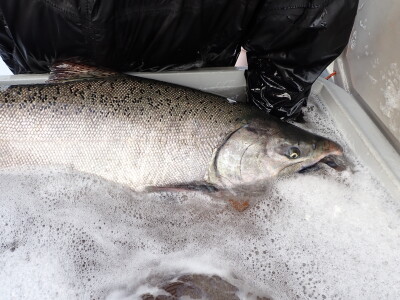Should California’s four-year drought break, causing rivers to run, next year’s crab season could be worse than the 2015-2016 season. The industry has, so far, lost at least $48 million in revenue for crab fishermen statewide, according to information presented at the Joint Committee on Fisheries and Aquaculture hearing last Thursday, April 28 in Sacramento.
The reason is the unprecedented large algal bloom that had an “unusual length and intensity,” according to Dr. Raphael Kudela, Professor of Ocean Health at University California of Santa Cruz. Kudela explained how California’s fisheries are fortunate to have algal blooms, making them rich in nutrients. However, when the winds didn’t move those nutrients in the usual patterns during 2014-2015, the bloom grew to an unusually large size. The scientists learned the algal bloom loves nutrients; as it digests nutrients, its toxicity — the level of the organism called pseudo-nitzschia — increases.
Pseudo-nitzchia is the organism responsible for the domoic acid accumulation in crabs, causing them to be poisonous for consumption. Eating crab tainted with domoic acid causes amnesic shellfish poisoning, which can lead to gastrointestinal issues like vomiting, nausea and diarrhea. In more serious cases, neurological symptoms appear such as dizziness, disorientation, loss of short-term memory, seizures and coma. The California Department of Public Health (CDPH) said there were no reports of domoic acid poisoning due to the toxic algal bloom event that delayed the recreational and commercial crab seasons.
Kudela and his colleague, Dr. William Sydeman, senior scientist with the Farallones Institute Team, fear if this season is followed by enough rain to end the drought, the rivers will run, bringing rich nutrients to the ocean. The algal bloom will then feed off the nutrients and, according to Kudela, be 400 percent more toxic than it was this year.






